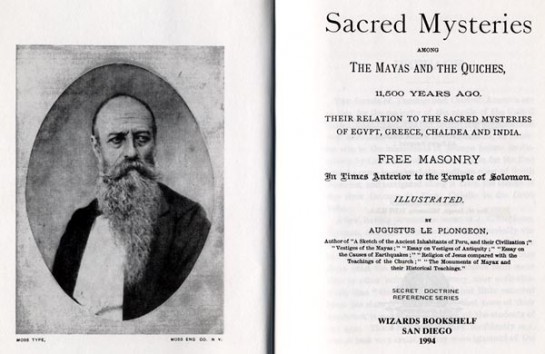
Sacred mysteries among the Mayas and the Quiches 11,500 years ago and their relation to the sacred mysteries of Egypt, Greece, Chaldea and India; Freemasonry in times anterior in the Temple of Solomon. The author presents to the reader some of the historical facts that have been brought to light by deciphering bas-reliefs and mural inscriptions, by means of the ancient hieractic Maya alphabet discovered by the author. He presents only facts that can be proven by well-known ancient and modern writers and by the inscriptions carved on stone by the Mayan people.
Augustus Le Plongeon (1825–1908) was a photographer and antiquarian who studied the pre-Columbian ruins of America, particularly those of the Maya civilization on the northern Yucatán Peninsula. While his writings contain many eccentric notions that were discredited by later researchers, Le Plongeon left a lasting legacy in his photographs documenting the ancient ruins. He should also be regarded as one of the earliest proponents of Mayanism.
Le Plongeon wrote a lengthy history of Maya culture, going so far as to propose a theory that Maya had been in touch with the lost continent of Atlantis and were ancestral to Ancient Egypt, a theory which has since been discredited by the scientific community. Le Plongeon, a Freemason, was also convinced that the roots of Freemasonry were to be found in the ancient Maya culture.

 RSS FEED
RSS FEED FACEBOOK
FACEBOOK TWIITER
TWIITER TUMBLR
TUMBLR